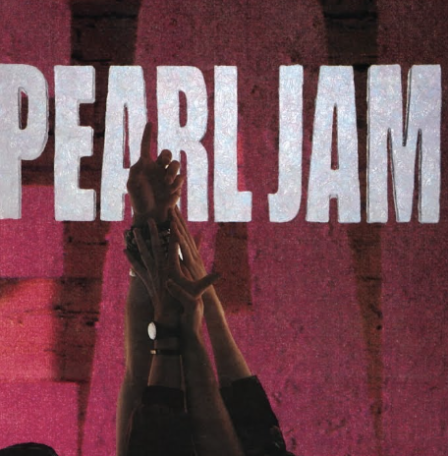WATER: Lyrics & Fascinations
By Jo Phillips
In this month’s theme of WATER, we have looked at how album sleeves depict water and it’s many personas and how water can producesound and become the source of a musical instrument (hydraulophone) but how is our beloved substance expressed in the form of lyrics? Categorizing songs by genre, we’ve selected songs in which musicians passionately describe water.
Electronic
Émilie Simon (France)
- Swimming
- Il Pleut
- To The Lake
- To The Dancers In The Rain
- Song Of The Storm
During the most creative peak of this French chanteuse’s career, Émilie Simon performed at alternative music club The Borderline in May 2007. She possessed a piano and guitar, a unique steampunk- looking electronic arm that modifies her voice with precision and a large tray of water. If you were familiar with her compilation album The Flower Book, it could be expected. Track 11 of that 2006 album Swimming begins with the sound of water being pressed, plodded and manoeuvred. It’s incredible clear and playful with it’s open approach and sounds like a safety hazard underneath her glitchy electric music box. Like the album cover for Red Hot Chilli Peppers’ Californication (mentioned in our water album covers article), the lyrics turn the balance of sky and ocean upside down, with Simon “swimming across the sky” and “flying in paradise in that ocean of dead lights”.
In fact a lot of the album is obsessed with H20 in it’s various forms. Not only does it contain running water, Simon places a rippling effect over her voice in the French-language Il Pleut (which translates as It Is Raining) to make it sound like she’s singing whilst submerging in a bath of water. Lukewarm about rain, it appears to help the protagonist’s wish for clarity in her relationship. Whilst in the English-language orchestral ballad To The Dancers In The Rain, the weather condition is seen as romantic setting for a dream-like date. “I’m your princess for tonight, maybe forever. We were dancers in the rain and it still remains…”
Whistling woodwind instruments (possibly pan pipes, flute or recorder) and tribal drumming attempt to paint a picture of a place that might contain a lake, such as woodlands or a jungle on In The Lake. Despite lakes seeming like mini oceans, Simon makes it sound like a large space where two lovers can be separated, although it’s likely to be metaphorical.“We are always a little bit far in the lake.” Émilie Simon provided the soundtrack to the original version of the nature documentary March of The Penguins and it included Song Of The Storm; an experimental alternative electro track in which Simon uses extreme weather conditions to show the intensity of her furious emotions. “Can’t you hear my storm coming? /Big black clouds forming now.” Water is not quite as lovey-dovey as it was before.
Gothic Metal
Evanescence (USA)
- Going Under
- Oceans
- Swimming Home
From the late nineties to early noughties, many genres had their time in the mainstream light and one of those genres was gothic metal, spearheaded by Arkansas band Evanescence. Going Under was one of many music videos played on rotation at MTV and it was very memorable for it’s depictions of fear. According to the Songfacts website “this is about a woman who is tired and tormented by her lover, who is pulling her down.” The torment is shown with freakish faces that pollute the audience at an Evanescence concert and the “pulling down” is illustrated when lead singer Amy Lee dives underwater. The lyrics “drowning in you” are love-related but associate water with death connotations and as a substance that needs escaping. Oceans is from Evanescence’s latest self-title release from 2011 and also documents a bad experience in a relationship. Its properties (colour, motion, texture) of water aren’t important, it’s a word that’s only use to signify something of a large mass. Amy Lee’s character is finding it so difficult to get over an important partner that she has to “cross the oceans” mentally to find closure.
On the same album is Swimming Home.A programming-meets-harp rock track that breaks away from their idiosyncratic metal leanings – although they are no strangers to heartfelt melancholy – is about the moment that one crosses into the afterlife. It’s from the perspective of an individual that’s dying and they are saying farewell in a modest manner by calling it “swimming home”. The line “I hear them calling and nothing can hold me”, imagines a character swimming uncontrollably into a direction that’s predetermined and magnetizes at it’s will, hence death. According to a comment on the SongMeanings website, Amy Lee always includes a song about her late sister on every Evanescence album and Swimming Home is one of them.
NEW AGE
ENYA (Ireland)
- Orinoco Flow (Sail Away)
- Storms In Africa (Part I) or (Part II)
- Caribbean Blue
- It’s In The Rain
- Trains and Winter Rains
- The River Sings, A Day Without Rain…
Love her or loathe her, the power of Enya’s music lies in the way it’s symbolized an entire genre, New Age and how it’s become it’s most successful ambassador. The Irish musician’s breakthrough second album Watermark following her split from Clannad was flooded with water references, making her an ambassador to our theme. There are two instrumental tracks on the album, one is titular and one is named River. The lack of lyrics makes it’s impossible to know which meaning of “watermark” she aimed for but it’s could be a double meaning of a mark showing the greatest height that a water has risen and the semi-invisible design placed on works of art to show their authenticity – called the watermark because it’s produced when the paper is still wet. Nevertheless, the most famous tracks from the album are Orinoco Flow and Storms in Africa. The former is an advantageous tour from the “shade of Avalon” to the “Isles of Ebony” to the “power of Babylon” to beneath “the Coral Sea” in a boat that’s repeatedly identified in the lyric “sail away”.
Although Orinoco is oddly named after London’s Orinoco Studios and not the Orinoco River that flows through South America. Storms in Africa is an Irish-language song on Watermark but was re-written in English to give it potential as a single. Lyrically, it’s simplistic without any metaphorical meanings and just documents the factual occurrences of storms in the aforementioned continent and how they gradually evolve; beginning as growing winds, then clouded dark skies before the “rain wash the earth away”.
This is one of the reasons why Enya is constantly paired with documentaries, travel adverts and geographical guides. From the following album Shepherd Moons, Caribbean Blue obviously refers to the colour of the ocean but rather unscientifically it questions whether the sky can reflect the colour of the ocean instead of vise-versa. Rather than use words from her native gaelic, it mentions Ancient Greek wind Gods: Boreas (north wind), Zephyrus (west wind) and Eurus (east wind). Almost two decades later, Enya bought back her fascination with water in two songs noting rain. It’s In The Rain focuses on the noise of the raindrops as they gravitate, the way they symbolize life’s constant fluctuations and aims to give them anthropomorphic qualities. “I can hear the lonesome sound of the sky as it cries. Listen to the rain. Here it comes again.”
Although her latest album And Winter Came…has a Christmas theme, she still managed to fit water on here in the form of the Christian choral song Trains and Winter Rains. Located in the city – illustrated by the keyword of “neon signs” – rain is just a mundane formality that tents over a backdrop of a journey where “it’s time to leave home” and enter the “unknown”, as stated by Enya herself on the musicians’ website.
FOLK ROCK
LAURA MARLING (UK)
- Undine
- Alas I Cannot Swim
- Captain And Hourglass
- Devil’s Spoke
- Hope In The Air
- My Friends
- Master Hunter
- Others: Devil’s Resting Place, The Water feat. Johnny Flynn
In an article at Spin.com in 2012, folk rock singer-songwriter Laura Marling confessed that she has a fascination with a water goddess known as Undine, whose mythological responsibility was to persuade people to walk into water to feel a sense of security- sounds a bit similar to the movie Cocoon. She even wrote a complimentary song about her new friend on her 4th album Once I Was An Eagle, calling her “sweet” and “pure.” Marling had already expressed a slight obsession and complex relationship with our beloved substance through the avenue of her lyrics and even once claimed that it’s power “took me into the edge of insane when I only meant to swim” (Master Hunter). Let’s start with her debut Mercury Prize nominated album Alas I Cannot Swim, which was produced by Charlie Fink of Noah and the Whale – biblical water reference. Knowing that Marling is a bookworm, the title of the 2008 album could be rearranged extract from a poem by Thomas Hood from the 19th Century called Faithless Sally Brown. The line reads “But O, I’m not a fish-woman. And so I cannot swim. Alas! I was not beneath.”
There’s something sea shanty about the lyrics on Captain And Hourglass and like the majority of Marling songs they sound like they exist in one of her former adventurous lives. “If I feel God judging me, I fell into the water and now I’m free.” is another case of using the sea as a symbolism for freedom. “And the sky and I have had our fights but I’m coming round to rain,” suggest an ongoing battle between a captain and the storms above her ship. “Rain” possibly being used utilized with two meanings; the secondary one being the alternative spelling “reign”, to show strength and control. Devil’s Spoke is from her second album I Speak Because I Can and on the second line she portrays the movement of water and one of its sources: “Ripple on water from a lonesome drip.” There are a few interpretations of the lyrics as a whole by fans but the consensus is that it’s about a woman trying to help a grieving man that she’s infatuated with, and feelings of sadness and guilt. So the vibration of water epitomizes chain reactions or the domino effect.
Other mentions of water include “no hope in the water” with water used as an example of one of Earth’s elements in the song Hope In The Air (I Speak Because I Can), the song itself is a combination of the story of Shakespeare’s King Lear and Marling own experiences with her father. “Ever considered the sea?”, “Why not float around with me” and “A few strong branches over water” are from the track My Friends (A Creature I Do Not Know). One interpretation is that Marling often uses the sea to convey the unpredictabilites of life. Marling declares that she does “not stare at water anymore” because “water doesn’t do what it did before” in Master Hunter (Once I Was An Eagle). Maybe she’s finally bored of it.
NATURE MUSIC PROJECT
SMÁRI TARFUR (ICELAND)
- SON OF THE WIND
The most famous name-check of waterfalls to date is in the title of the 1995 R&B song by TLC. It contained a powerful socially conscious message highlighting two major problems developing in that decade; drug trafficking and HIV. “Don’t go chasing waterfalls” is a key line that expresses the body of water metaphorically, warning about the consequence of being too ambitious, ignorant and risky.
20 years later, Icelandic guitarist Smári Tarfur took a daring risk of his own. Already successful and touring the world with his various music projects (Quarashi, Hot Damn! And Yija), he decided to befriend a popular tourist-visited waterfall in Iceland called Seljalandsfoss Waterfall. Although rather than chasing the waterfall, he just sat beside it and began playing music, seeing the peaceful and tranquil backdrop as a fresh antithesis to the festival lifestyle of yesteryear. He recorded the 4-track EP Son Of The Wind inspired by this experience. Notably you can see Smári Tarfur on the cover plucking his acoustic guitar in lap slide fashion.
It was funded by the simplest form of crowd funding (none of thet PledgeMusic/Kickstarter lark), the public who walked past the fountain during his performances. They were impressed by his dreamy, spiritual sound and how in touch with nature he was. A risk worth taking and one of the most complimentary and appreciative takes on water that we have explored in this month’s theme.










